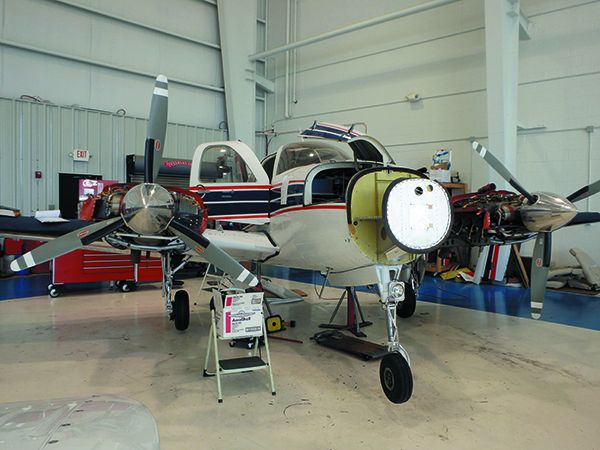We’ve been owning and flying airplanes long enough to know for certain that the sport has many things going for it. But let’s be real—membership also comes with some downsides. This includes rising insurance premiums, ever-changing fuel prices, monthly database updates and, of course, maintenance and upgrades.
While we encourage owners to perform as many of the preventive maintenance tasks listed in FAR 43’s Appendix A as they are capable of, some things require signoffs the typical pilot can’t make legally. And then there are the dreaded annual inspections.
Plan as we might, and no matter how proactive we are, there still are elements of putting our plane in a shop in for its annual that are out of our control. So it was with a reader who shared with us his tale of a recent annual and surprise engine overhaul gone bad—it was down for almost four months and racked up an eye-watering invoice. It’s but one cautionary tale of the kinds of things that can and will go wrong with a complicated machine, and why managing the shop and monitoring its progress is key to successful and timely owner-coordinated aircraft maintenance.
COMMUNICATION IS KEY
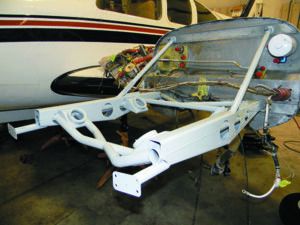
“The airplane had a set of cylinders subject to an AD requiring 50-hour inspections and a calendar-based life limit. I hadn’t flown it that much since the last annual, and I had no idea if they’d all pass. I had forgotten about the calendar limits, which it turns out I was up against.” Still, this owner had a good plan already in place.
“Knowing the engine was on borrowed time and wanting to rid myself of the meddlesome AD, I had planned for and actually wrote a check to the shop, at their request, to buy a complete new set of cylinders for installation while the airplane was in for its annual.
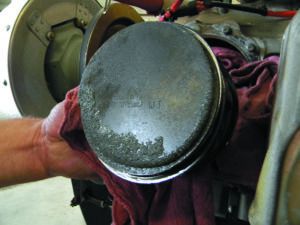
“I delivered the airplane to the shop on a Wednesday. Over the following weekend, I saw where the FAA had adopted a new AMOC (alternate method of compliance) for the AD, allowing an extra two years of operation, presuming they passed a visual inspection and compression check. I emailed the shop manager that same day, simply asking if he’d seen the new AMOC. The next day, the shop manager advised he had canceled the order for the new cylinders.”
Let’s stop here. The owner not only had budgeted and planned for installing new jugs, but had prepaid for them, too, clearly communicating his intent for the shop to perform a top overhaul while the airplane was down. Worth mentioning is that decision wasn’t contingent on the inspection outcome. Here’s the first major flaw in the shop’s communications effort.
Instead, the shop unilaterally decided, based on the owner’s question about the AMOC, that he no longer wanted to replace the cylinders. Not only was that decision counter to the owner’s demonstrated wishes, it was a multi-thousand-dollar choice made without consulting him.
“I presumed the shop had done the AD’s inspection and decided to set aside the top overhaul and avail myself of the extra time the new AMOC allowed. But it turned out the shop had yet to actually inspect the jugs as all this transpired, so a week or so of time was lost before that occurred. And one of them didn’t pass, of course.”
This engine had already seen a cylinder replaced the previous year, hence the initial plan to do the complete top-end this year. Plus, the owner was leery of doing cylinders piecemeal, since it’s easy to get the through-bolt torque wrong, which can lead to spinning a crankshaft bearing and all sorts of other bad things.
We could never really understand why some owners bring the airplane long distances for annual inspections. And by long distance we mean someplace that’s not accessible in under an hour’s flying or driving time. Sometimes you simply need to make in-person visits.
“Feeling some of this was getting out of control, I visited the airplane in the shop and, among other things, got a close-up look at the engine’s innards, which looked better than I expected. That helped me make the decision to go ahead with the complete top overhaul. To facilitate the work, I authorized the shop to remove the engine and do some cleanup work under the cowling while it was out. I also asked that the oil pan gasket be replaced while it was accessible. All this soaked up a couple of weeks since delivering the airplane.”
In our view, it’s reasonable to expect a shop will perform at least a compression check on a piston airplane delivered for an annual inspection right after it’s shut down, when everything is nice and hot. That didn’t happen here. Cold compression checks frequently return low readings that a hot engine won’t, so it’s a waste of time to postpone it and then, possibly, need to run it up again if a cylinder fails the test. The shop could have planned this better and been more accommodating, perhaps shortening the overall downtime and initial “confusion” about the top overhaul.
CAN OF WORMS
Things got progressively worse, and expensive decisions needed to be made. A couple of days later, the customer got an email from the shop manager with an attached video file, showing play in two accessory gears. The only way to see how these two gears meshed was by removing the oil pan. The problem? There’s not supposed to be any looseness at all with those gears. At least the find explained an operational problem the owner had been experiencing with the engine. An overhaul was brewing.
“The case had to be split to fix the problem, which opened up a can of worms. On one hand, there’s stuff that should be done when the case halves are split that goes beyond just slapping them back together. That starts to get expensive, edging the cost ever closer to that of an overhaul.” Easy decision, no?
On another hand, the engine was we’ll on its way to TBO. If the customer cheaped out and elected to have the shop repair the gears, hang the new jugs and put everything back together, in a few more years he would have an engine at TBO with fairly young cylinders—on which he had just dropped a significant portion of the cost of a complete overhaul a couple of years earlier.
“The shop asked around and got the local engine overhauler to give me a decent price on overhauling the engine. Since I already had the new jugs, the engine was already out of the airplane and had been partially torn down, the price was attractive enough that the future costs, plus downtime, plus the peace of mind knowing that everything else had been gone through, convinced me to bite that bullet. The engine went out to the overhaul shop and I started figuring out how to pay for it all.”
The engine was about 350 hours short of its TBO, which in this situation made the question of an overhaul more attractive than if it had only 350 hours of service. It’s hard to fault the owner for wanting to be safe instead of sorry. Meanwhile, kudos to the shop for working with the owner to help lower the sticker shock of this annual inspection. The engine overhauler also deserves some credit for working with them both, especially since they didn’t need to.
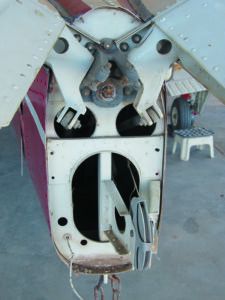
We’ve said it before: Annual inspections are just that—inspections. In our experience, the inspection itself on the majority of basic single-engine piston airplanes easily needs only a day. But owners frequently choose to use the opportunity (the airplane’s interior usually is out, anyway) to perform other tasks and upgrades, perhaps accomplishing maintenance items deferred throughout the 12 months since the last annual. All of which makes for additional downtime. Plan on it.
And then there are the “might-as-well” projects that start piling up when tackling a task in the same airframe area, or the “it’s-a-good-thing-we-opened-that-up” surprises that lengthen the shop time, and the invoice. When components have to go out to specialist shops, you’re at the mercy of others, who likely are on a completely different schedule, with their own sense of urgency.
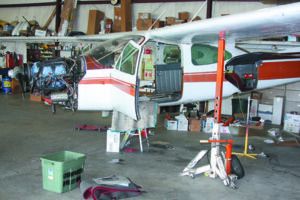
Where you get your maintenance done isn’t always a choice. Geography plays a large role, as does timing—if the airplane is AOG away from its base, you’re at the mercy of the local shop, presuming there is one. Once the airplane is spread across several Zip codes, it’s impossible to put the toothpaste back in the tube, to mix some metaphors. Even online reviews and “war stories” may not be all that useful, since you may be getting only one side of a sordid story, and since personnel come and go. Still, it’s useful to listen to others’ recent experiences and, especially, determine the shop’s familiarity with your airplane type before making a decision.
YOU WANT IT WHEN?
You can have it good, fast or cheap—pick any two. So goes an old saying that, amazingly, seems to apply to almost any service, from haircuts to dentistry and to engine overhauls. Especially engine overhauls.
“The engine went to the overhaul shop three weeks after delivering the airplane for its annual. Roughly 45 days later, I heard from the maintenance shop that the engine shop had not received a deposit. That’s because no one asked, and I drove a check up the next day. After writing another (larger) check and more than a month later, the complete overhauled engine was delivered back to the maintenance shop, ready to install. Some back and forth ensued, regarding details like engine mounts and such. I could see light at the end of my downtime tunnel. But it was not to be. Three days later, I was advised the shop was closed due to an outbreak of COVID-19.”
It turned out that the shop was effectively shuttered for a couple of weeks. It’s unfortunate that events presumably beyond both the owner’s and the shop’s control conspired to lengthen the downtime, but stuff happens. And that’s something we’re hearing about quite often. And it isn’t just in the aircraft maintenance world. No matter what industry—automotive, home building supplies, recreational power sports—the parts supply chain and a shortage of workers is slowing things to a snail’s pace. We’ve heard of large shops shutting down for weeks at a time as COVID-19 spreads through the facility.
In total, 133 days elapsed between delivering this airplane to the shop for its annual inspection to first flying the new engine. A bunch of little things demanded attention—including stiff engine control cables, details under the cowling, fuel-flow settings and the like. Those things can add up in time and on an invoice.
“One big thing involved binding in the elevator control system. During my extensive preflight inspection, I noticed the elevator would not easily move to the full nose-up position, and that the binding was accompanied by other indications that the problem was behind the instrument panel. It took a few hours to remove part of the interior, find the problem and put things back like they were supposed to be.”
The airplane didn’t have this problem—or others delineated here—when it came in to the shop for the inspection. The various squawks the owner found seem to us to result from haphazard reassembly in a well-intentioned effort to get the airplane back to its owner. By this point, however, rushing to finish up a project wouldn’t have appreciably shortened the downtime, while this and other squawks only served to ramp up everyone’s frustration level, add additional complications and, ironically, extend the airplane’s downtime. No good deed goes unpunished is a phrase we would often use in the shop.
“Another big thing was failure of the airplane’s overvoltage relay, resulting in the alternator overcharging the battery and putting too many volts into the electrical system. I caught that on starting the engine for its first flight, which didn’t happen that day. Unable to locate the overvoltage relay, the shop installed a new, electronic regulator with its own overvoltage protection.”
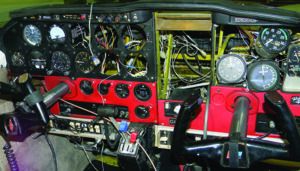
You thought annual inspections were made in hell. Try a major avionics retrofit, and when you do, bring a healthy dose of patience. Truth is that productivity has slowed on even the best shop floors. In addition to a slowed parts supply chain, there’s a worsening shortage of good avionics installers, troubleshooters and bench technicians. Some shops told us they were shut down for weeks or more during the height of the pandemic. Coming off the ADS-B rush, some of these shops are behind schedule by as much as six months. That’s not a comfortable position, especially if it has collected deposit money to secure a spot on its flawed schedule. It’s enough to derail a relationship before the job even starts.
As we consistently hear in our satisfaction surveys, the ones that know how to communicate are the ones that keep a tense working relationship on the rails, and you should consider that when you pick one. But you also need to do your part. That means bringing the aircraft to the shop before getting a proposal so it can better prepare for the job, fulfilling your responsibility of the payment terms (don’t let money matters be an excuse for the aircraft sitting) and having a real conversation with the shop before the job begins. Ask if the equipment is in stock or will it be ordered in a certain amount of time. Some shops order installation kits first, then the major equipment at the end of the job, to reduce overhead. The problem with that is if there’s a backorder, your aircraft is sitting with a bunch of holes in the panel. Ask if paying a bigger deposit will ensure they order the equipment promptly.
And as odd as it may seem, ask the shop what priority you have on its schedule. Is your job filler work and worked in around bigger jobs, or is firmly on the schedule for a given day or weeks? This oftentimes isn’t we’ll communicated when you shake hands to close the deal. Face it, some shops overpromise to reel in the work.
Just because the shop gives you the green light to come over for a flight test doesn’t necessarily mean you will take it home. A test flight is just—an inflight eval. Depending on how much was installed and interfaced, there could be more days of work to iron out the bugs. We wouldn’t consider the job fully complete until you’ve flown the aircraft for a few hours, and even then you might need to bring it back for some tweaks. Add the costs of this test flying to the project’s bottom line. If you own one, we don’t have to tell you that big twins and turbines burn lots of fuel.
Last, be patient, and expect reasonable cost overruns. There are things that can snowball a job once the shop digs in. And as a general rule of thumb, we wouldn’t schedule major engine work around major avionics upgrades. It just makes things more complicated.
A HAPPY ENDING?
“Eventually, other details got sorted out, like a broken power connection at the autopilot’s circuit breaker that seemed to be an easy fix, but which then went intermittent, and a failed secondary navcomm, which exhibited symptoms similar to the autopilot—no power. Those issues are scheduled to be resolved in the near future, which means I have to bring the airplane back.
“For now, the airplane is back in its hangar and the engine is on its second oil change after overhaul. Cutting open the first oil filter revealed nothing of any concern. The engine is making good power and runs smoothly. Fuel flow has been adjusted, along with some tweaks to the engine baffling, and all cylinders now are running at cooler temperatures. In all, I’m happy with the overhauled engine and its performance. I just wish it hadn’t take so damn long.”
There are few airplane maintenance tasks more invasive and disruptive than an engine change. When that’s paired with an annual inspection, extensive downtime results, along with a predictable desire to get the airplane out the door and flying again once all the parts are back. The new squawks are a flashing neon sign that the shop rushed the job to completion as it tried to catch back up on its workload after being forced to shut down for a COVID-19 infection. From this report, the owner is still dealing with the fallout.
The moral of all this is that airplane maintenance can be fraught with uncertainties. Try as you might, events may conspire against timely results. Patience, knowledge of the airplane and its systems and a healthy bank account only go so far. Sometimes, stuff just happens.

